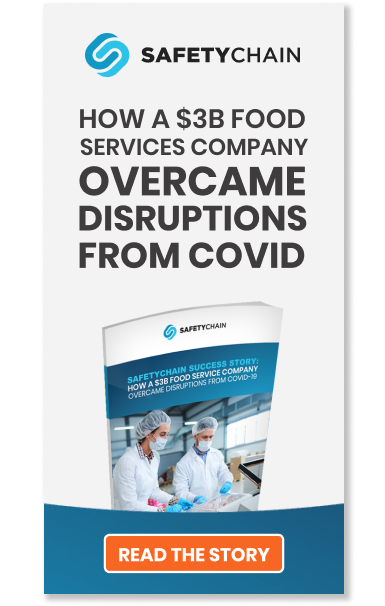sponsored
In the era of the Internet of Things, machine learning and technology that drives innovation and growth for industries, there’s no dispute that data is king.
How that data can be harnessed and made more useful by companies, from smaller manufacturers to corporations with plants across the globe, is advancing to provide real-time information that can tackle hurdles to productivity faster – and even clue plant managers in on problems they didn’t know existed.
To achieve those results, companies must say goodbye to outdated tools of the trade, from legacy enterprise resource planning platforms, limited point solutions, spreadsheets and paper documents.

Enter Plant Management Software, a newer concept that ties together oversight and data collection from the mundane, such as plant cleanup schedules and tasks, to the all-important tracking of production statistics and inventory.
Barry Maxon, CEO and co-founder of SafetyChain Software, which focuses on plant management software for the food, beverage and consumer packaged goods industries, said the software is a relatively new concept for process manufacturing. Companies have relied on unconnected data points, whether digital or on paper, to focus on the many parts of manufacturing, from food safety and Hazard Analysis and Critical Control Point programs to management of suppliers, line starts, OEE and yield.
“Plant management software is starting to put together a broader footprint that traditionally in the past you would have had to go out and buy three or four different point solutions to try to do a portion of what plant management software is doing,” he said.
At its core, plant management software is about maximizing the productive profitability of a plant.
“There’s a lot that goes into that,” Maxon said. “There’s no one thing; it’s everything, it’s a whole coordination of activities.”
Plant management software is designed to target inefficiencies that lead to a drag on the bottom line, from out-of-spec products, wasted raw materials, bottlenecks on the production line, and unplanned stoppages that eat into productive use of labor.
“On top of all of that, the next big dimension (provided via plant management software) is continuous improvement and how you use data to drive continuous improvement,” Maxon said. “In today’s technology-driven world, data is king, one of the most valuable resources in an organization.”
While the underlying value of the data provided through plant management software is universal to all manufacturing environments, there are specific examples for food/beverage and CPG industries:
Food and beverage manufacturing: Perishable foods and beverages demand a tighter control on inventory and shipping than durable goods. Increasing regulations such as the Food Safety Modernization Act and traceability mandates for produce shippers from the Food and Drug Administration are placing a greater emphasis on companies to demonstrate compliance.
As competition and complex regulations place a greater need on in-plant efficiencies and communication with others in the supply chain, whether upstream or downstream, plant management software eases the ability to do so.
CPG manufacturing: With online purchasing rapidly escalating, especially as consumers curtailed in-store shopping during the global pandemic, the need for real-time overview of manufacturing and inventory has also ramped up. Traditional management of production and all of its moving pieces doesn’t allow for the necessary control over and visibility into manufacturing processes.
“It’s interesting – food and beverage companies invest huge amounts of money in collecting data on paper that gets locked in filing cabinets in binders,” Maxon said. “It’s like burying money in your backyard. It does you no good.”
By ditching those binders in favor of a digital solution, plant managers have the ability to oversee what’s going on in facilities without needing to travel. Mobile devices allow remote oversight, increasing the ability to make decisions based on current data. That’s a significant plus for managers, Maxon said.
Return On Investment
Maxon is big on return on investment, and said it is “fundamentally super-critical” in measuring success for customers.
“We’re really big on how plant management software can deliver a hard dollar ROI,” he said. “There’s a lot of ways you can look at that, and uptime is a big one. If you can improve your on-time starts, and have a faster line start-up, you can reduce your change-over times, that’s increasing your overall ability in uptime to produce products.”
The data uncovered by plant management software allows executives and plant managers to make decisions based on real-time projections and trend data.
“Yields can put millions of dollars to the bottom line of a company, just by simply getting more value out of the goods that you’re buying,” Maxon said. “One of the largest expense items, after labor and equipment, is all your ingredients. Maximizing raw material yields is of huge value in ROI.”
With a comprehensive plant management software platform, data is immediately available to chart trends, test the metrics of new processes or evaluate the effectiveness of separate parts of the manufacturing process.
“With food and beverage industries, we’re dealing with a very fast-paced environment where you want to be able to identify an issue as soon as possible,” Maxon said. “The sooner you can correct an issue, the smaller the cost to fix it is going to be.”
(To sign up for a free subscription to Food Safety News, click here.)

